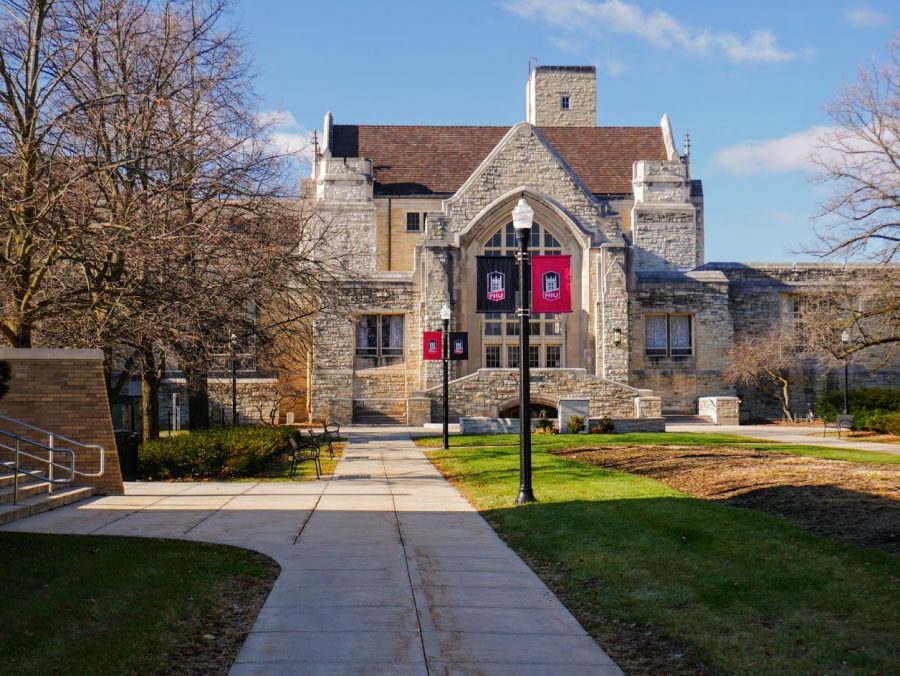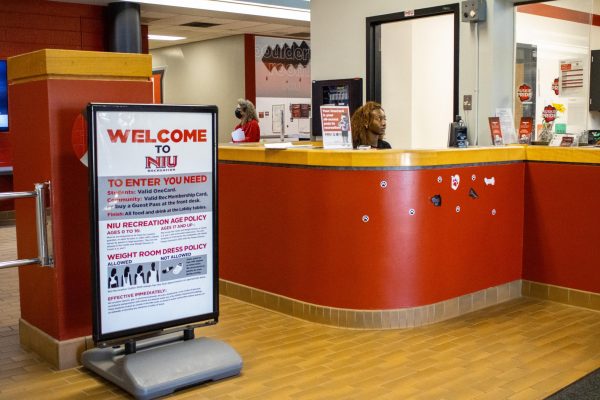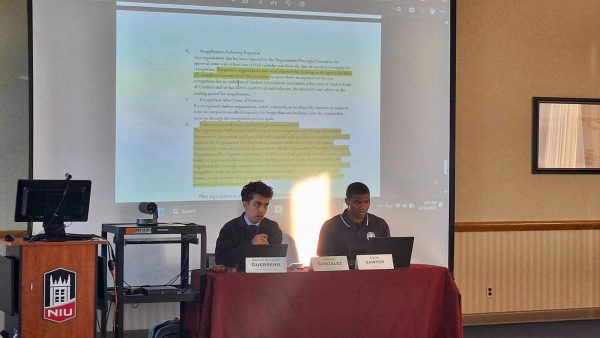New enrollment plan focuses on removing barriers, retaining students
Enrollment projections to be set yearly. Focal points to help benefit student success.
DeKALB — As NIU and the rest of the country look to rebound from the COVID-19 pandemic, the university unveiled a revamped Strategic Enrollment Management Plan Monday with the mission of guiding the university toward addressing the challenges students are facing and meeting the needs to keep student retention at a high level.
“This plan is focused a lot more on student success, persistence and graduation,” Sol Jensen, vice president for enrollment management, marketing and communications said.
The plan comes two years ahead of schedule as enrollment numbers at NIU have seen decreases that are attributed to COVID-19 and throughout higher education learning.
The first year of enrollment projections sees NIU sitting between 15,600 and 16,100. This would mean an increase between 1,000 and 1,500 students, based on NIU’s spring enrollment totals.
The making of ‘SEM 2.0’
After announcing in September a new plan would be incoming, questions arose as to who would be involved in giving input for the new plan. “SEM 2.0” sought feedback throughout the NIU community compared to its original counterpart.
“The other piece that I think is different is that we really wanted to have more of a shared process,” Jensen said.
Jensen said the SEM committee met with faculty, staff and SGA members to get a better sense of the direction the plan needed to take.
A focus on student support
The new enrollment plan outlines NIU’s goals through 2025 and its accountabilities relating to the three themes of this plan: Brand Identity, Targeted Enrollment Efforts and Improving Access and Affordability.
Some of the goals NIU is looking to achieve focus on course credit evaluation, providing more services to better student success and the re-enrollment of “stop-out” students.
Omar Ghrayeb, vice provost for undergraduate studies, said that competency-based education models will help remove barriers and give students better opportunities to earn credit for knowledge and skills they already know.
“We want to remove that barrier,” Ghrayeb said. “As an institution we are looking at our process that is systematic and easy to follow and implement.”
Ghrayeb said that this process will not only focus on prior courses taken but will span into experiential learning that people receive through trade work or past job experience.
Creating a larger enrollment pool
The focus on recruiting a student body might look different going forward and provide a new avenue due to initiatives like the course evaluation structure.
“We know that the traditional-age student population is declining,” Jensen said. “We have to continue to look at other opportunities. I think to the point that (Ghrayeb) was making about the need for competency-based and prior learning for credit, I think (credit initiatives) could really impact the number of prospective students.”
Another focus of the enrollment plan is bringing back “stop-out” students; students who are in good academic standing and do not re-enroll for whatever reason, outside of graduation or transferring institutions.
Provost Beth Ingram and Ghrayeb said they know NIU has a large population of stop-out students due to COVID-19 and they hope to bring them back into NIU under this new plan.
“We want to make sure that they know that we want them back and we think they can finish,” Ingram said. “We are working to develop pathways so that students who started here can finish here.”
The university plans to focus on students who stopped out over the last two years and hopes to go as far back as students from five years ago.
Check-ins ahead for SEM plan
For all strategies listed in the accountability plan, goals are displayed by showing a “completion date” ranging from Fall 2023 to Fall 2025, depending on the necessary components.
Theme 3: Improving student success, persistence and graduations have anticipated completion dates between Summer 2023 to Fall 2025.
“The data is sort of far out there and that’s because we’re looking at things like graduation rates, retention rates,” Provost Beth Ingram said. “When you think about a four-year graduation rate, doing something today… you can’t see the results of that for four years down the road.”
We want to make sure that they know that we want them back and we think they can finish Ingram said that while these goals are a few years away, NIU is constantly monitoring students’ grades, academic probation numbers and satisfactory academic progress numbers. These metrics are how Ingram and others verify that incremental progress is being made toward these metrics.
The metrics for enrollment setting
Unlike the 2019 plan, enrollment projections are being released on a year-to-year basis, after that year’s census date has passed.
Ingram said the university will use “macro factors” to help set the next year’s projections. These include national college enrollment trends, national transfer student numbers and examining what’s occurring in institutions similar to NIU.
While NIU believes that current models will show enrollment plateauing, there is still hope for some incremental growth at NIU.
“I think just understanding the demographics of our state and so forth, I think we’ve hit a high and we’ll start to plateau,” Jensen said. “I still think there is some relative growth there as well.”
Though the strategic enrollment plan will help guide the university, it is not the North Star document dictating all of NIU’s strategies for recruiting and retaining.
“Although SEM 2.0 is extremely comprehensive, it is still not a full list of everything that’s happening around NIU to support students,” Jensen said. “There are still many other things that are happening outside of even this SEM plan that are assisting students both on the recruitment, retention and graduation standpoint.”














